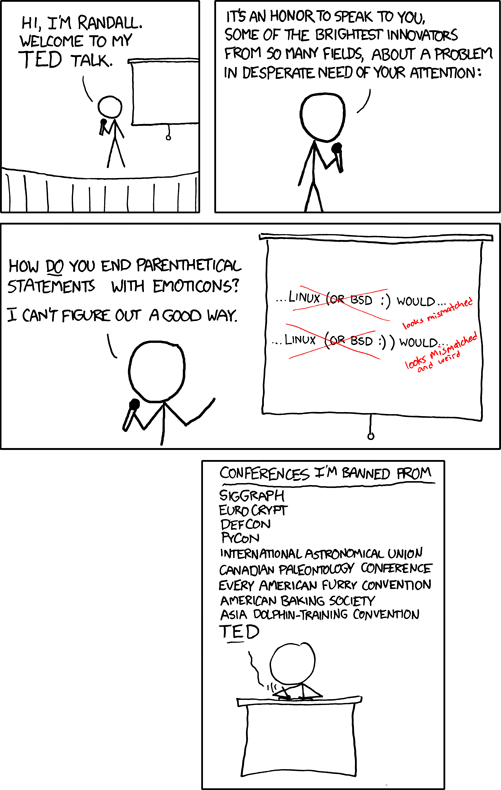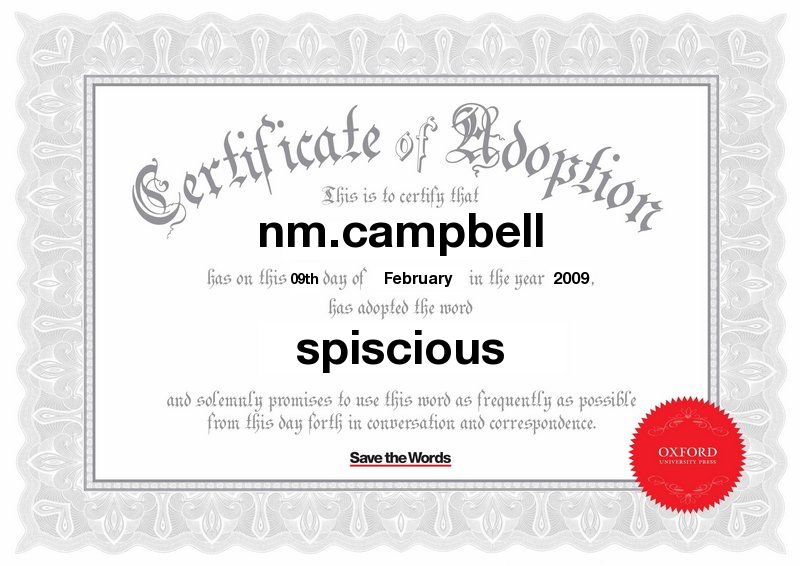Month: February 2009
Tie of the day
So you’ve bought every t-shirt I’ve ever posted here and your wardrobe is complete. Except for a few accessories. Like a tie, for formal occasions.
How bout this one. The Tetris Tie. From Amazon. $US24.95. A bargain.

Pour quality – putting the art into latte art
Coffee photos are my current favourites. This one here featuring a “naked portafiller” is very nice. Does anyone have a spare angle grinder? A naked portafiller for my machine would cost $70 otherwise.

This one’s from Flickr user Tonx’s coffee photos.
There’s shots from barista competitions, cafes and a variety of other coffee related events. And some Latte Art. Including this one. My favourite. There’s a series of “making of” ones for this too so I’m pretty sure it’s legit. Or a seamless photoshop job. They’re worth checking out.

Chelsea say goodbye to Premier League for this year
Chelsea have just sacked manager Luiz Felipe Scolari – considered by many to be in the top tier of managers world wide. Talk about impatient. This is bound to kill their season. It’s incredible – they’ve had some of the best managers in the world in recent years, and they’ve sacked them all. It’s a poison chalice. Who’d want to be the next manager of Chelsea? Really.
The best bits – February 10, 2009
Here's what has excited me from the blogosphere today.
- An Interesting Morsel from an Old Magazine
- An Interesting Morsel from an Old Magazine
- Rudd in the Monthly
- The healthy teaching pyramid
- Find Your Inner Barista
- More Info On The Vodafone And Three Merger
- Are These the 100 Best First Lines From Novels?
- Dealzmodo Hacks: 8 Ways To Get More Miles Out Of Your Old PC
- Swimming Pool Isolation Helmet Telephone Concept Is the Worst Idea Since Unsliced Bread
- Vodafone And Three Merging In Australia
Harpers Magazine reviews Charles Spurgeon – 1858
Harpers Magazine reviews Charles Spurgeon – 1858
“The trouble with neo-liberalism is that it hopes that a human vice – namely, greed – will produce much virtue.” – Interesting review of a K-Rudd essay in the monthly.
Interesting breakdown of a preaching schedule. Or Breakdown of a preaching breakdown. Or something.
Interesting comparison on the cost of coffee (using US dollars). I could work out the costs based on home roasting. And I will later. Just not now.
I’m with 3. I like 3 (except that they don’t sell iPhones). This could be painful. I was just talking to Lyle, an unhappy vodafone customer, last night about how much Vodafone is the suck. Oh well. I think vodafone might have iPhones. I’ll check that out.
Evolution over time
The war between creationists and evolutionists is long running and intense. It’s perhaps most hotly contested at Wikipedia – which is, as we know, representative of the prevailing views of a particular topic.
The conflict has been visualised. Here. And is now included in reduced form below for your viewing pleasure and edification:

Good news for bad brands

A study profiling relationships between 21 countries – coincidentally the 21 countries in the map above – has revealed that while all the usual suspects are still generally disliked worldwide, yesterday’s rogue state is today’s favourite son. Germany, who surely would not have scored this well in the 1940s, is the world’s most popular country according to the BBC survey measuring populace sentiment in each of the 21 countries.
If Germany can hit the top spot there’s hope yet for Iran, Israel and Pakistan. This year’s losers.
Japan’s top for finish is further proof that World War 2 is truly behind us.
If these countries can recover market perception in this way there’s still hope for brands that have lost face with the general public. Perhaps Nestle* or other evil brands will find themselves clawing up the charts if they do what Germany and Japan did – stop being evil.
The Obama brand also had a minor effect on the US ratings. It will be interesting to see how much movement there is on that front next year.
*I don’t know if Nestle is still evil, I just couldn’t think of anybody worse.

Spiscious up your life
I have adopted a word. Spiscious.
adj.
Of a thick consistency.
I suggest that if you’re passionate about conservation – particularly conservation of redundant and superfluous words – that you do the same. You even get a certificate. The site is really cool too. A collage of endangered words looking for a loving adopter. All you have to do is use the word as much as possible.
So eat a spoonful of cement and spiscious yourself up.
Emoticonference
XKCD only occasionally fails to amuse me.Here’s today’s. TED was the conference Bill Gates released mosquitoes at. It’s a gathering of the “best and brightest” minds in America.

A bright spark: Coffee Machine update
My coffee machine is working again. It seems the water that I found in various parts of the machine was probably the problem. Based on my diagnosis (which could well be flawed) the waste water bottle being full caused the issue. But if the problem occurs again I’ll have to go back to the drawing board on that one.
I did get to pull the machine apart again and used that as an opportunity to comprehensively photograph its gizzards.
My desktop PC and Breadmaker are both still out of commission. Hopefully not permanently.
Disaster reporting
Stuss has a great post today about news coverage of disasters. With particular reference to the current fires and the saturation of “special news editions” on commercial television.
“This week I am again appalled at the news coverage. As far as I’m concerned, it is just not appropriate to show extended footage of any disaster. Regular updates, fine, good even, but not regular as in replace everything you would normally be showing.”
As a journalism graduate working in PR I’ve got some thoughts on the issue. I reckon these are probably worth posting here – even though they’re pretty much verbatim what I posted as a comment on Stuss’s post.
As a “journalist” I’m in two minds on this. Disasters like this are real news – and there are people who want to know every bit of the story – particularly if they have friends or families in affected areas and haven’t been able to make contact. But, sometimes not a lot is happening and there’s a whole lot of repetition – and then there’s the talking to about 10 secondary sources.
Experts in their fields. So you have the eye witnesses, the firefighters, the fire commissioner, the politician, the police and other involved parties having their say… then you have the behavioural psychologists, the weathermen, the university professor, the opinion columnist, etc, all throwing their opinions into the mix.
If you consider the September 11 story – the news coverage started off reporting just the facts. From and objective point – two planes crashed into the World Trade Centre buildings. There were plenty of “objective” updates. The buildings collapsed. The rescue effort. All of these were newsworthy elements and there were lots of primary sources to be talked to.
Then, in the days following the actual moment of impact there was a heap of other stuff thrown into the coverage. Speculation on why the buildings collapsed, interviews with engineers about the tower’s structure, interviews with people who knew about the effect of heat on steel. That sort of thing. Then there was the “why” element – terrorism experts, politicians. Everyone had two cents worth to throw in. Reporting a disaster is like peeling an onion – you can split a story into layers and layers of complexity.
There’s an inverted relationship between time and newsworthy content – unless new things are happening all the time.
Because of ratings pressure and the desire not to be “one upped” if something significant does happen all the networks are simultaneously peeling the onion. They need to keep doing that to keep the coverage rolling.
There should be a dedicated “disaster channel” and each network should donate resources to a pool of talent – and they could all draw stuff out of that pool for nightly bulletins.
As a viewer, I tend to get sick of the special coverage pretty quickly if nothing new is happening. The fact that I keep watching comes from my inner news addict than from any form of compelling content.
Having dedicated event coverage is also good for continuity of viewing. The nature of big stories is that there are lots of new bits happening all the time. I would be very frustrated if my regular programming was constantly interrupted by updates. At that point I think keeping the “special news bulletin” thing running is less disruptive than otherwise.
Extended coverage of disasters can have a demonstrably large effect on children. I did an assignment on that at uni once.
The other problem with the reporting aspect comes when circumstances are blown up to pad out bulletins. Take the current flooding in North Queensland as a case study.
Ingham is underwater. That’s bad for Ingham. But news bulletins around the country have been featuring journalists based in Townsville in their weather updates. Townsville has had some water. Yesterday’s king tide didn’t help things.
But to use images from the small percentage of streets in Townsville with flooding and tar everywhere with the same watery brush is unconscionable reporting and does significant damage to the city’s reputation and its economy. Tourism bookings to Townsville are being canceled all over the place. We’re in contact with Tourism Queensland’s international offices daily because people think Townsville is underwater.
Overstating the case in a disaster is a spur of the moment decision by news producers with pretty big consequences for those on the ground. This is particularly problematic when secondary source experts with no bona fides are thrown in front of a camera to spread their particular brand of hysteria.
Try being the person who has to fix the idea that Townsville will be closed for the next two months due to flooding.
The best bits – February 9, 2009
Here’s what has excited me from the blogosphere today.
- Add-Art Replaces Advertisements with Artwork [Firefox]
- DIY Fiber Optic Ring Flash [Camera Hacks]
- Architects Rule! : Real-life Dilbert manager quotes
- Death To The Embargo
- God, us & evil
Pretty interesting stance taken by a leading tech blog sick of being hounded by merciless PR people.

